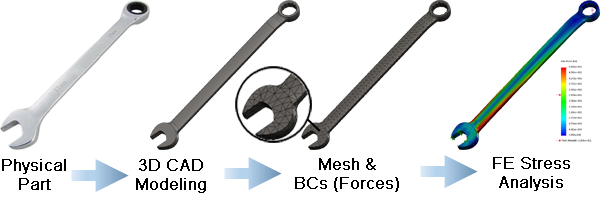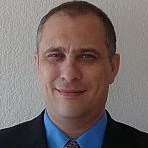"We proceed by common sense and ingenuity. There are no rules, only the principles of integrity and objectivity, with a complete rejection of all authority except that of fact."
Joel H. Hildebrand
Mechanical Forensic Engineering Services
Proof Engineering is a mechanical engineering consulting company specialized in product failure analysis and injury prediction using human injury criteria such as HIC and NIC. We provide technical support to law firms and expert witnesses, primarily in product liability where causation is proved or disproved through scientific or physics-based 3D simulations, animations, or reenactments. These types of analyses are useful as they may bolster confidence of an expert witness's testimony and provide 3D visuals to members of the jury. For instance, in a product liability case involving a design defect, a physics-based simulation leading up to the point of failure may be presented to the jury via a 3D animation. This animation may show that the product was or was not sufficiently designed to support the loading or stress levels experience by the product, which caused it to break and cause personal injury.
As an example, the following animation is a hypothetical recreation of a chair tip over accident created by Proof Engineering. Animations such as this may be physics-based, based on plaintiff and/or defendant accounts, or matched directly to surveillance camera or 3rd party footage. Here, the scene is meant to demonstrate how an actual scene may be measured and accurately recreated by computer in 3D. Likewise, the actor may be modeled by use of manikins such as the 95th percentile male used in the video below..
The FE Analysis Process (Simplified)

The picture above is a simplified illustration of the finite element process for scientifically simulating and
predicting failure. Beginning with a physical, real-world part or complex assembly, it is first reverse-engineered by taking precise measurements either by hand, with a 3D laser scanner, coordinate measuring machine, or optical comparator. Once reverse engineered, the data is input into a 3D CAD system and from this point forward exists on the computer where it may be manipulated (rotated, geometrically modified, magnified, sectioned, etc.). From 3D CAD, the component enters the finite element realm. Here, the component is first meshed or divided into polygons or polyhedrons which
mathematically approximates the component's geometry. After meshing, boundary conditions are applied which are the forces and physical constraints exerted on the part. Boundary conditions may include concentrated loads, torques, pressures, heat, friction, etc. Both static and transient scenarious can be simulated. After setting up the FE model, a finite element analysis solver such as LS-DYNA is used to crunch the numbers. A viewer such as LS-PREPOST is then used to assess the magnitude of stresses and displacements experience by the component. Sound engineering judgement based on the observed stress and material strength limits is then used to determine the likelihood of component failure.
Benefits of finite element analysis versus physical testing include:
•Efficiently identify causes of failure
•Greatly reduced prototyping and/or testing costs
•Quickly perform "what if" scenarios or analyses. (e.g. how does the component behave if we thicken or change the material)
•Analyze parts without damaging the assembly or component (i.e. non-destructive analysis)
•Restoring damaged, crushed, or crumpled parts to their new or "pre-deformed" shape
•Investigate effect of design or manufacturing flaws on overall product or system performance
About Proof Engineering's Michael Kremer, P.E.

Over the past 5 years Michael Kremer has provided engineering support to expert witnesses and law firms in the area of product liability. Mr. Kremer is a professional mechanical engineer with over 18 years of experience in the development of heavy industrial equipment, automotive systems, and consumer products. Specialized skills include the use of the finite element method in solving problems related to shock, vibration, product failure, and vehicle crashworthiness and occupant protection. He has formerly served as the section chair of the Arizona-Nevada section of the Society of Automotive Engineers (SAE) and is currently an active member.
Applications
A few examples of potential applications:
- Expert witness testimony
- Product liability litigation
- Jury visuals (2D and/or 3D)
- Demonstrative exhibits
- Construction Accidents
- Intellectual Property (IP)
- Vehicular Injuries
- Reenactments
Our Specialties:
- Vehicle collisions
- Seating and restraints
- Consumer product failure
- Industrial machine design
- Heavy, steel structures
- Blast simulation
- Impact simulation
- Shock and vibration mitigation
- Fatigue analysis
- Pressure vessels
- Mechanical systems
- Stress analysis
- Nonlinear analysis
- Heat Transfer
- Human injury prediction
- Root Cause Analysis
Available Tools:
- LS-DYNA (FE program)
- Hybrid III dummies, barrier models, semi-truck models, free motion headform
- LS-PREPOST
- NASTRAN (FE program)
- Femap (pre/post processor)
- Hyperworks, Optistruct (FEA tool)
- Solidworks, Autodesk Inventor
- NASGRO, AFGROW
- Multiframe 4D (structural analysis)
- Working Model
- 3D Printing



